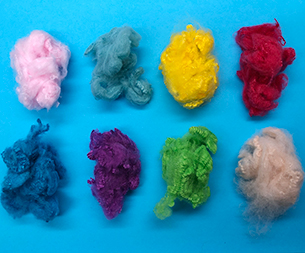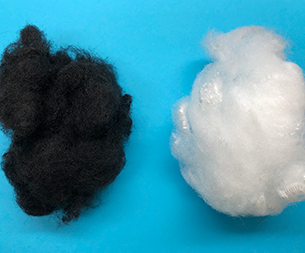On March 25, news from the National Bureau of Statistics stated that the cotton sown area in Xinjiang will be 2501.9 thousand hectares in 2020, a decrease of 1.52% from the 2550.50 thousand hectares in 2019; the cotton production in Xinjiang in 2020 will be 5.162 million tons, compared with 2019. 5.002 million tons increased by 3.20% year-on-year.
The cotton planting area in Xinjiang has declined, why is the output still increasing? This benefited from the support of science and technology and other means to promote the high-quality development of Xinjiang cotton.
Xinjiang is blessed with natural conditions, with large temperature differences in summer, abundant sunlight, sufficient photosynthesis, and long cotton growth time. Therefore, the quality of Xinjiang long-staple cotton has reached the world's top level, made into clothing, warm, breathable, and comfortable, and the supply has been in short supply for many years.
The spring is getting warmer. At the high-standard cotton planting base in Shounut Village, Yaha Town, Kuqa City, several high-horsepower guided unmanned tractors are being sowed with precision. The scene is very spectacular.
In recent years, Xinjiang has continuously improved the modernization, intelligence, and information level of agricultural machinery operations, and introduced high-tech technologies such as unmanned tractors to provide farmers with full mechanized technical services for land preparation, planting, plant protection, and harvesting. Many high-tech applications are boosting the high-quality development of Xinjiang's cotton industry.
"With the deepening of the national cotton price reform, the implementation of the rural revitalization strategy, and the application of high-tech technologies such as unmanned tractors, we are more motivated to grow cotton." This year, Kurban Tohuti, a villager of Shounut Village On the basis of contracting 20,000 mu of land to grow cotton last year, another 10,000 mu was contracted.
Plant protection drones, baling cotton pickers, residual film recovery machines, intelligent deep-tipping ploughs... these intelligent machines are favored by more and more Xinjiang cotton farmers.
Data shows that the level of agricultural mechanization in Xinjiang has been increasing year by year, and the comprehensive mechanization level of cotton has reached more than 80%.
In recent years, the mechanized cotton harvest area in Xinjiang has grown at an average annual rate of over one million mu. From 2016 to 2020, the cotton harvest level will increase from 20.71% to 69.83%.
Cotton is one of the local pillar industries. Xinjiang has continuously improved the competitiveness of the cotton industry and promoted the high-quality development of the cotton industry through the use of technology to promote cotton.
Last year, in order to stabilize the scale of cotton production, Xinjiang continued to optimize the number of cotton varieties, improve cotton quality, and develop high-yield cotton regions.
In order to promote the high-quality development of the cotton industry, the Autonomous Region Science and Technology Department launched the "Cotton High-quality, High-yield and High-efficiency Standardized Production Technology Integration Demonstration Project" last year. This major scientific and technological project invests 31 million yuan to meet the scientific and technological needs of Xinjiang’s high-quality, high-yield, high-efficiency, standardized production of cotton and the safe supply of agricultural water resources. It takes 500,000 mu of high-efficiency and water-saving cotton fields in Shaya County as the research object. "Increase efficiency" as the goal, carry out technological innovation and integrated application, and form a high-quality, high-yield and high-efficiency experience in cotton production that can be replicated and promoted in southern Xinjiang.
"Last year, the varieties were unified according to the'one main and two auxiliary' seeding model, and the cotton price of 70% of the cotton varieties in our village was also higher than in previous years." Director of Yingak Erik Village Committee, Karatal Town, Aksu City Mehsutti Amizhela said.
The “one main and two supplements” model is to promote cotton planting counties and cities in Xinjiang to plant cotton with one main variety and two collocation varieties. At the same time, it encourages the development of one product in one county and one product in multiple counties according to local conditions, effectively solving the problem of multiple and mixed cotton varieties. , The problem of chaos, improve cotton quality from the source.
According to reports, this year Xinjiang will speed up the promotion of the "one main and two supplementary" seeding model in the same ecological area to solve the problem of multiple cotton varieties from the source; promote the entire mechanization process of cotton production in the autonomous region, especially in southern Xinjiang, and strive to achieve a mechanized recovery rate of more than 70. %, to promote the green and high-quality development of cotton production in Xinjiang.
- Polypropylene staple fiber is th
- The tariff problem has hit the s
- Haibang leads the innovation and
- The influence of RMB appreciatio
- The important role of polypropyl
- Under the recovery of global tra
- The unique performance of polypr
- What challenges does the textile
- Taizhou Hailun Chemical Fiber Co
- How does Keqiao take new quality
- Markets
- Automotive Products
- Nonwoven Lining
- Geosynthetics
- Liquid Filtration
- Apparel and Textiles
- Hygiene Products
- Building and Construction
- Other Markets
- Contact Us
- Contact Haibang





